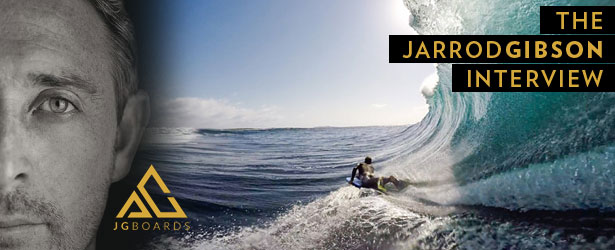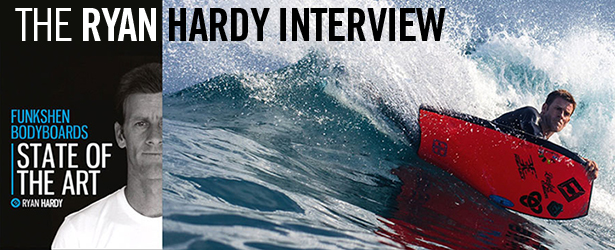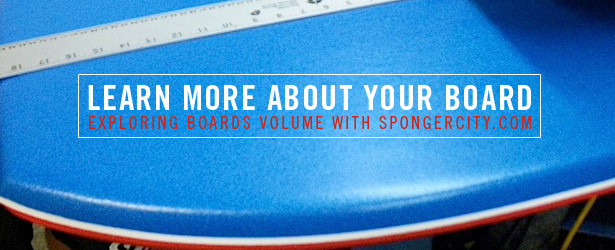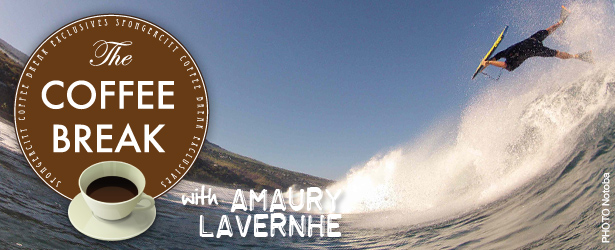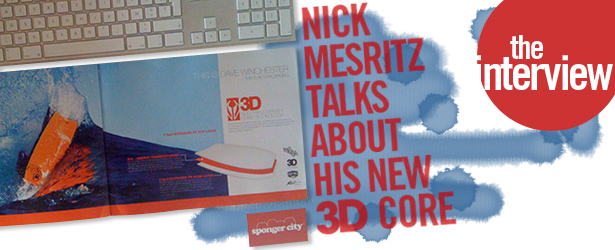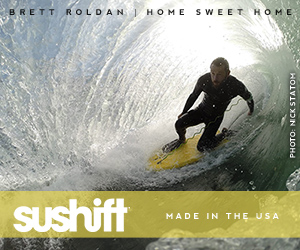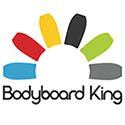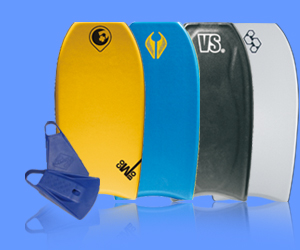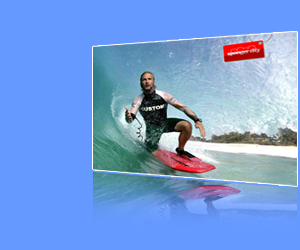While reading the latest Movement or Riptide Mags this month you might have noticed NMD and VS ads featuring a new logo and a new core technology which Nick Mesritz developed recently. The new core is called 3D Core Technology (Triple Density Core) and is a layered core composed of PE, PP and a thin layer between both cores.
The new core technology is quite innovative and is definitely something you’ll be hearing about or surfing on very soon. We were curious and teased with these new ads and new core announcement so we decided to talk to Nick Mesritz himself and learn more about the new board core than what was written on the ads.
We contacted Nick early this morning and here we are tonight, editing this really quickly at 11pm ! Yeah, web is magic and Nick does reply to his email faster then most !
Here’s the quick interview:
First of all the core looks like the perfect solution between a stiff and a flexy board. Sounds amazing. How did you come up with the idea ?
My team riders had been complaining for years that PP is too stiff and PE is too soft, so the aim was to find or develop a core that was somewhere in the middle. I couldn’t find a single extrusion core material suitable. I tried beaded PP, but due to it being completely closed cell, the boards were too buoyant and sat too high in the water. It became obvious that to find the perfect compromise between stiffness and flex, I had to somehow combine the PP and PE cores we had available to us. It didn’t make sense to vertically bond the PE to the PP, as there would be an unnatural nose to tail flex, depending on where you placed the PE. Horizontally layered sandwich construction made much more sense to me. It had been used in snowboards for years and by layering the various foams, it was possible to achieve specific flex properties with natural, undistorted nose to tail flex.
How did you figure out how to make it work ? Coz i know PP and PE dont bond together too well without an intermediate layer. Must have been hard to make it all work ?
The next step was how to manufacture the core. I won’t go into too much construction detail, but in order to heat fuse the PP top layer to the PE base layer we are using a specially formulated substrate that allows us to achieve the PE to PP bond. This layer also adds to the flex properties of the board so we have selected a density and thickness that best serves our requirements.
I bet you made multiple tests with the riders ? and tests in the factory ?
As for testing, once I knew I could fabricate the board in production, I made up several samples for Ben which he has tested over the past 2 years. I’ve also made boards for other pro riders and some knowledgeable industry types to get their feedback. This feedback and input is what has helped me to dial in the right core layer thickness, which, in-turn, dictates the overall flex pattern of the board. That’s the beauty of this design, in that we can vary the flex of the boards by changing the layer thickness.
Is there a stringer in 3D core boards ?
Yes, we use a stringer in the 3D core boards. With today’s advanced levels of riding, there’s is not a core out there that can withstand the impact without some sort of stringer based reinforcement.
What’s the stiffness like ? between PE stringer and PP stringer boards ?
In its current construction, the flex of a 3D core board is pretty much in the middle between PE Stringer and PP Stringer boards.
The core is available in NMD’s and VS’s from what i’ve seen but will it be available in other board brands you build in your factory ?
All brands produced in our Indo factory will have access to the 3D type, multi-layered core technology.
Regarding the 3D core why did you choose PP on top and PE on the bottom ?
I chose PP on the top and PE on the bottom simply because this combination gave the best flex response and overall performance in testing.
Are you working on other cores in the future ?
I am working on a new PE blend core with my supplier. I hope to have test samples later in the year. But I’m mostly focused on the 3D multi-layered core technology and different variations dialled in for specific conditions.
3D Core ad Preview
Another 3D Core Ad Preview here
Thanx Mez for the quick chat !
Cheers,
Theo

